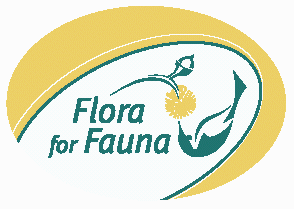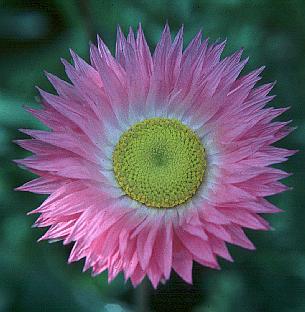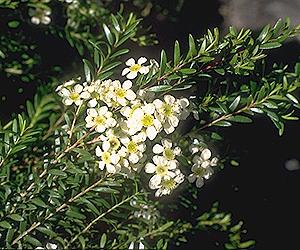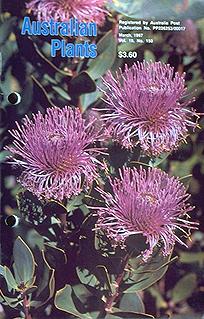|
[Front Page] [Features] [Departments] [Society Home] [Subscribe]

First Cuttings
Australian Plants Societies
Australian Plants online is brought to you by the 7 Societies that make up the Association of Societies for Growing Australian Plants (ASGAP).
Have you ever thought of joining one of the Societies? There is a Regional Society in every Australian state and also in the Australian Capital Territory. In addition, there are over 100 district groups established in centres throughout Australia.
Membership brings many benefits - regular district group and Regional newsletters, the colour journal "Australian Plants", access to free seed banks, regular meetings with expert speakers, bush walks, garden visits, advice from experienced growers, access to difficult to obtain plants and access to Study Groups.
Why not take a look at the Membership Page and see what we have to offer?

The "Gumnuts" Newsletter
Gumnuts is an email newsletter on Australian native plants which is published 4-6 weekly. It covers a wide range of topics - limited only by the imagination of its subscribers.
To subscribe - please see the "Subscribe" section of the current issue.
You may unsubscribe at any time.

Flora for Fauna
 
The "Flora for Fauna" project is a Nursery and Garden Industry initiative and is supported by the Federal Government through its Natural Heritage Trust. As mentioned in our September 2001 issue, the aim of Flora for Fauna is to encourage people and communities throughout Australia to create 'living gardens' - gardens that naturally attract, nourish and provide a safe haven for birds and other wildlife frogs and lizards. The programme will encourage increased plantings by local councils, property developers, schools and other community groups while discouraging the domestic planting of environmental weeds.
There is now a website for the project which is designed to assist people to:
- Fnd out all about the Flora for Fauna program
- Discover what wildlife can be attracted to the garden
- Find out how to create the right habitat including what to plant, other things to do and what not to do
- Find out where to get even more information

New Book on 'Everlastings'
Everlasting Daisies of Australia is a new publication by ASGAP's Australian Daisy Study Group covering identification, propagation and cultivation of these popular plants. The book is the result of five years of work by the Study Group - it aims to encourage the appreciation of these Australian daisies and to develop techniques for germinating and growing them.
 |
|
| Rhodanthe chlorocephala ssp rosea |
|
There are chapters on growing everlasting daisies, propagation, floral arrangements, floriculture, reproduction and hybridization. Detailed species' descriptions are written in easy-to-understand language and illustrated with beautiful colour photographs. For each individual species there are sections on flowering period, propagation, cultivation and uses, distribution and habitat, and similar species. Where appropriate there are brief notes on hybridization, name changes and relationships with other species.
Everlasting Daisies of Australia is a comprehensive guide that will assist home gardeners, commercial growers, students of horticulture, amateur naturalists and visitors to wildflower areas throughout the continent.
The 196 page book is available in soft cover (245 x 176 mm) at a recommended price of $49.95. It should be available through most larger bookstores.

Number One Pest - Lantana
As reported in the previous issue of Australian Plants online (see Lantana - Horror Story), lantana is one of the most serious environmental weeds in Australia. The following note is by Lynette Reilly and is from SGAP Queensland Conservation, a newsletter from the Society's Queensland Region. It throws serious doubt on the environmental safety of so-called 'sterile' forms of lantana.
Lantana is a Weed of National Significance for Australia. This will not come as a surprise to anyone who has ever been involved in the restoration of native vegetation. It was brought into this country as an ornamental plant in the 1840s and by the 1860s it had spread into bush and farmland.
Removal
While pulling and spraying are effective techniques directly, it is because so much of it is in difficult-to-get-at places that a biological solution is being sought. Since 1914 twenty-eight insects have been introduced to control lantana. A major problem with biological control is that lantana has a genetically very diverse nature. The Newsletter of the Environmental Weeds Management Group (EWMG) (Oct. 2001) notes evidence of even so-called 'sterile' garden varieties of lantana producing pollen which may cross-pollinate wild lantana and produce new varieties in the wild.
"The EWMG strongly encourages nursery owners and the community to sell and grow locally native plants in their gardens instead of potentially weedy imports like lantana"
While Society members all know this, may its repetition spur us on to emulate Geoff Butler. Almost single-handedly he has got all nurseries in the ACT to agree not to stock environmental weeds.

Those $$*#!!#$$ Botanical Names
 
Stressed out by those incomprehensible botanical names???
What does "flavescens" mean?
And what about "paludosa" and "dobagii" (as in Banksia paludosa and Adenanthos dobagii)??
Who invents these bloody names, anyway?
Well - calm down and take a look at The Dictionary of Botanical Epithets. Here you'll find a comprehensive listing of these mind-numbing and tongue-twisting names combined with an excellent search engine to make your search quick and painless. For example, the site told me that:
"flavescens" is made up of the parts flavus meaning "golden yellow, reddish yellow, flaxen or blonde" and -escens which is a suffix meaning "becoming like or incomplete resemblance -ish".
So... flavescens = yellowish ...and you would expect any plant with this specific name to have flowers which are sort of yellow - but not quite.
Similarly I found out that "paludosa" means marshy or boggy, which presumably infers that Banksia paludosa occurs in boggy ground - which it doesn't! Oh well...
The site, however, failed with "dobagii" - probably not surprising as it's an acronym (for Department of Biogeography and Geomorphology).
Another site worth checking out for botanical meanings is the Glossary of Roots of Botanical Names.
Thanks to Randall Linke and Nanette Hooker for sending details of these two sites.

Babingtonia virgata - Exotic or Native?
Some confusion exists about the status of the widely grown plant known as twiggy baeckea or tall baeckea. The botanical name of this plant was previously Baeckea virgata.
| |
 |
| |
Babingtonia bidwillii |
The problem stems from the fact that the recent revision of the genus Baeckea transferred many species into the genus Babingtonia and established that Baeckea virgata (now Babingtonia virgata) is a native of New Caledonia and does not occur in Australia at all.
So....does this mean that the twiggy baeckea is not an Australian native plant?
Well....no! It is an Australian native species and always has been. The change in nomenclature that has occurred doesn't change this.
What the change means is that the plants we have been growing aren't (and never were) Babingtonia virgata - they are some other species of Babingtonia - most likely Babingtonia pluriflora for the common tall growing species or Babingtonia bidwillii for the dwarf forms.
So there's no need to dig out plants of "Baeckea" virgata as "exotics" - because they aren't! Just go and change the label!
Further information on the names changes affecting Baeckea can be found in "When is a Baeckea not a Baeckea", in the December 2001 issue of Australian Plants online.

Australian representatives of the hibiscus family are not well known in cultivation despite the fact that one member of the family (Sturt's desert rose, Gossypium sturtianum) is the floral emblem of the Northern Territory.
There are many Australian members of the family that are worthy of cultivation and an excellent place to find out more about this group of plants is the Australian Native Hibiscus website. Although the site is primarily about hibiscus and hibiscus like plants that occur in Australia, the site includes information on other hibiscus, such as the tropical hibiscus, Hibiscus rosa-sinensis in the FAQ section. The FAQ section also includes information on cultivation, propagation and availablility of seed online.
Some of the features of the site are:
- Australian species, including information and photos
- Culinary Uses
- FAQs
- Links to other Hibiscus family sites

Plant Breeders' Rights - Database On Line
Recently the Plant Breeders Rights Office of the Department of Primary Industries and Energy announced the launch of the Plant Breeders Rights (PBR) Variety Information Database - On-Line. The database is available through the Agriculture, Fisheries and Forestry - Australia (AFFA) and Plant Breeders Rights Office(PBR) web site.
From the press release....
 
"The Plant Breeders Rights Variety Information Database and previous editions of the Plant Varieties Journal, highly regarded around the world for the excellence of its content and presentation in hard copy, are now freely and immediately available as an electronic reference source.
Australia is the first of the fifty members of the International Convention for the Protection of Varieties of New Plant (UPOV) to make this vital information truly accessible for both sexually propagated and asexually propagated varieties. The database features a detailed description and colour image for every variety granted full rights and basic information for other PBR varieties. Searches by genus, species, common name, variety name and title-holder are some of its many advantages."
For further information on PBR as applied to Australian native plants refer to Nik Hulse's article "Plant Breeders Rights: Overview with an Australian Native Plant Perspective in this issue of Australian Plants online.

"Australian Plants"....in print!
 
The Society's 48 page, colour (printed) journal, "Australian Plants" has been published quarterly since 1959. It carries articles of interest to both amateur growers and professionals in botany and horticulture. Its authors include the leading professional and amateur researchers working in with the Australian flora and many beautiful and high quality photographs of Australian plants are published in its pages. Topics covered by the journal cover a wide range and include landscaping, growing, botany, propagation and conservation.
A subscription to the print version of "Australian Plants" is $20 annually for 4 issues (overseas $AUS32) including postage. To subscribe, print out the Subscription Form and post or fax the appropriate fee to the address indicated on the form.
Note that the contents of "Australian Plants" and "Australian Plants online"
are totally different.
These are some of the topics covered in recent issues of "Australian Plants":
Correa cultivars
Boronia and its relatives
Wildflowers from Cuttings
Australian Bottlebrushes in the UK
Astrotricha - Two recent Queensland species
Tasmanian Epacriadaceae
Australian Citrus
Growing Hakea in a Dry Climate
Olearia - Plants of the daisy family
The Olympic and Paralympic Bouquets
Eucalyptus cabinet timbers
Eremophila as Cut Flowers
Eremophila Seed Germination
Cassia and Senna in Australia
Australian Ferns - Growing them successfully
Smoke induced germination
Tea trees
The "Honeypot" Dryandras
Bernawarra Gardens - Tasmania
Plants for wet areas
Philotheca and Eriostemon - name changes
Lilly Pilly cultivars
Tropical legumes
Eucalyptus cinerea - lignotuber studies
Nutritional needs of Proteaceae
Labichea and Petalostylis
Xyris in Australia
Ferns in a garden
Yellow Waratah...Telopea truncata form
"Pines" of Tasmania
Tasmanian plants in horticulture in Britain
Eucalypts of Tasmania
Cut flower production trials
Emu Bush - Growing Eremophila
Kangaroo Paws - for colour
Creating a native garden...For beginners
Native honeysuckle; The genus Lambertia
Fertilizing for grevilleas
Creating homes for birds and mammals
Mistletoe; their natural biological control
|
Container plants for balconies
The genus Flindersia
Myrtaceae - Bottlebrush-type plants
Growing Callistemon in Large Pots
Darwinia
Banksia Cultivation and Propagation
A Plantation Timber Industry
Hakea for Cultivation
Grafted Hakea
Ornamental Eucalypts for cut flower production
Leptospermum - colourful cultivars
Australian Rushes
Native Bees and Seed Dispersal
Sun Orchids - Thelymitra
Eucalyptus Foliage - Cut stems and postharvest
Vegetation of Macquarie Island
Grevillea - care and maintenance
Proteaceae of the rainforest
Richmond Birdwing butterfly
Terrestrial orchids of Royal National Park
Bladderworts - carnivorous plants
New Banksia releases
Edible wattle seeds - southern Australia
An introduction to legumes of Australia
Orchids as garden features
Native lowland grasslands of Tasmania
Orities - Tasmanian endemics
Gardening in clay
The daisy family
The tea tree oil industry
Riceflower - an everlasting daisy as a cut flower
Corkwood as a source of medicine
Outback Gardening - Achieving water efficiency
Pioneering Quandong as a fruit
Commercial cropping in the dry Interior
Bush food plantations
Rainforest plants - horticulture and bush tucker
Native fruits - Aboriginal food
About plant roots
NSW Christmas Bush: Cut flower industry
|

[Front Page] [Features] [Departments] [Society Home] [Subscribe]
Australian Plants online - June 2002
Association of Societies for Growing Australian Plants
|